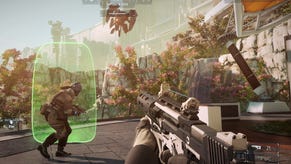PS4 architect knew in 2007 that "clearly we had some issues with PlayStation 3"
He began covertly canvassing devs about PS4 in 2008.
PS4 lead architect Mark Cerny knew as far back as 2007 that "clearly we had some issues with PlayStation 3".
The system was complicated compared to PC and Xbox 360, and the result was PS3 often coming off worse during multi-platform game development.
2007 was when Mark Cerny began researching the X86 processor that's now inside PlayStation 4. His passion for Sony's new machine and what ought to be in it led him to pitch for control of the project. He got it.

"The biggest thing was that we didn't want the hardware to be a puzzle that programmers would be needing to solve to make quality titles," Mark Cerny told Gamasutra, referencing the Cell.
It wasn't until dedicated PS3 teams at Naughty Dog (Uncharted) and Sony Santa Monica (God of War) invested time and money getting to grips with PS3 - and shared their findings - that Sony's machine started to shine.
As early as 2008, Mark Cerny began asking developers what they wanted in PS4. He had to be fairly innocuous about it - "it's not like we could come out and say we were developing the next generation of hardware" - so he asked in a questionnaire what developers and middleware engine makers thought the next generation might bring. Unified memory, they said, and no more than eight processing cores please.
The tool chain and development environment were also part of the solution. "We wanted our tools to be much richer and much more accessible to our developers," said Cerny, "even in the launch timeframe." PlayStation Vita was the first embodiment of that.
The result of Cerny's hard work was unveiled by Sony in February. PlayStation 4 has PC-like architecture that developers understand, and a whopping amount of memory that developers are labelling "a joy".
The Witcher 3 developer CD Projekt Red also highlighted another welcome effect of PlayStation 4's PC-like architecture: being able to make one change during development that will affect all versions of a game, rather than bespoke changes for each. "This time around the situation is much easier for developers," said Adam Badowski, head of CDPR. And "much easier" means much quicker which means saving time which means saving money. Less faff, more creativity, better results.










